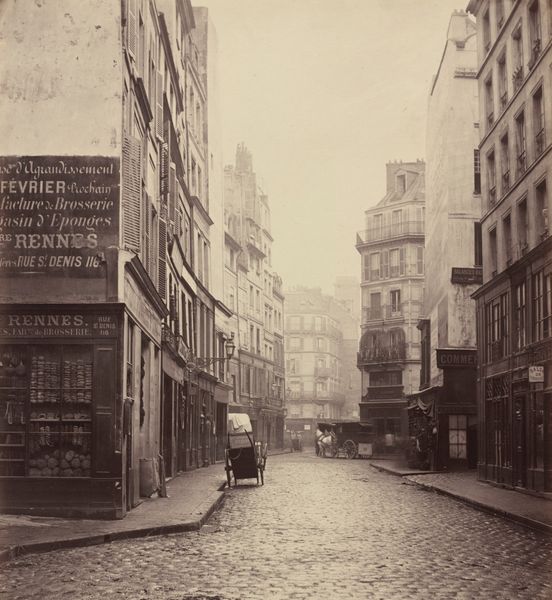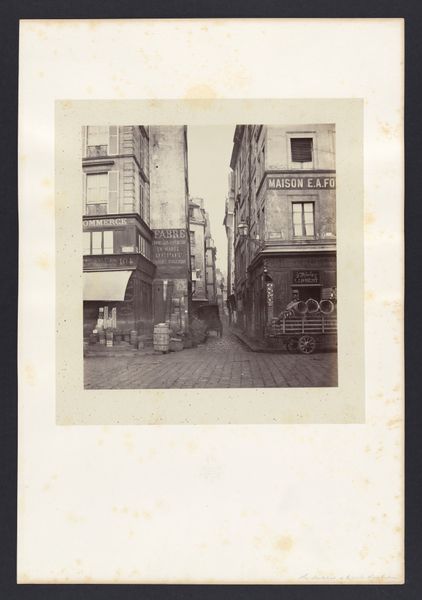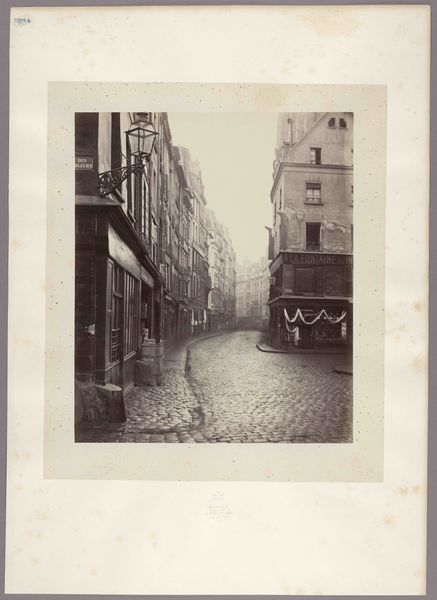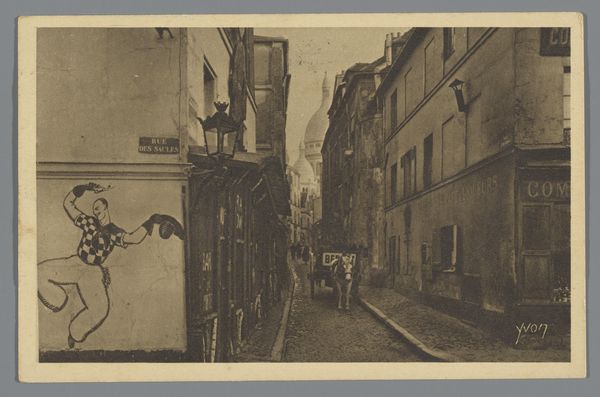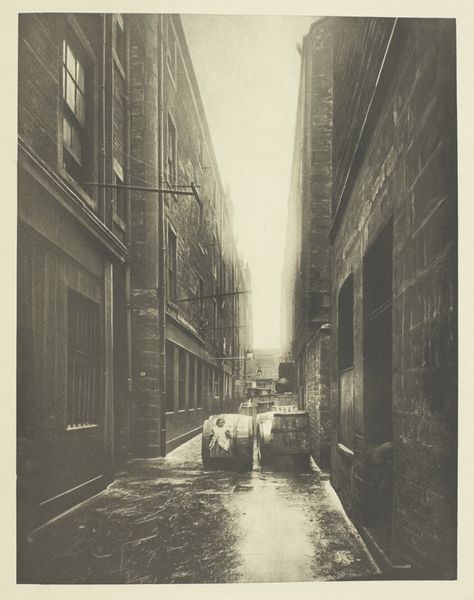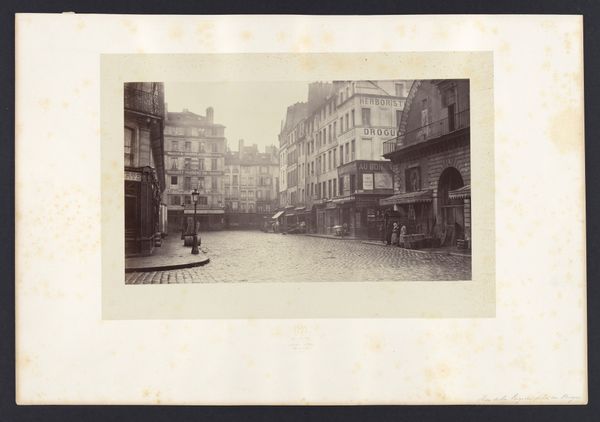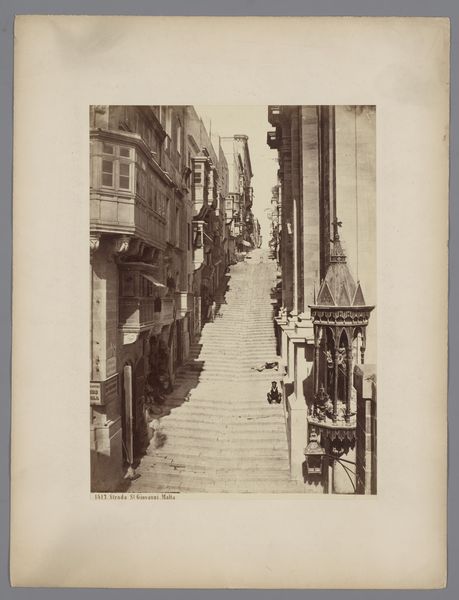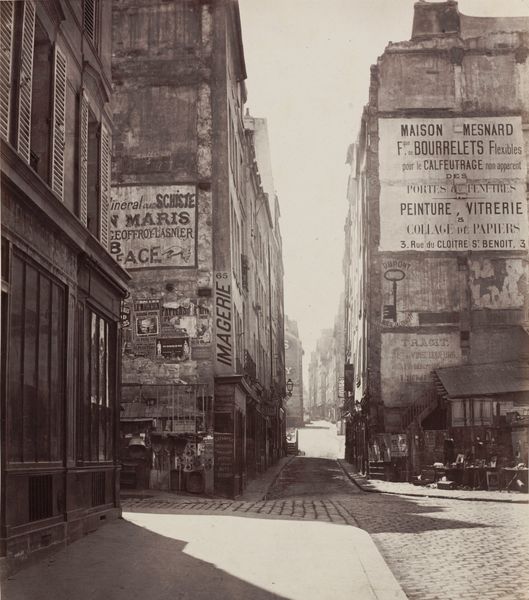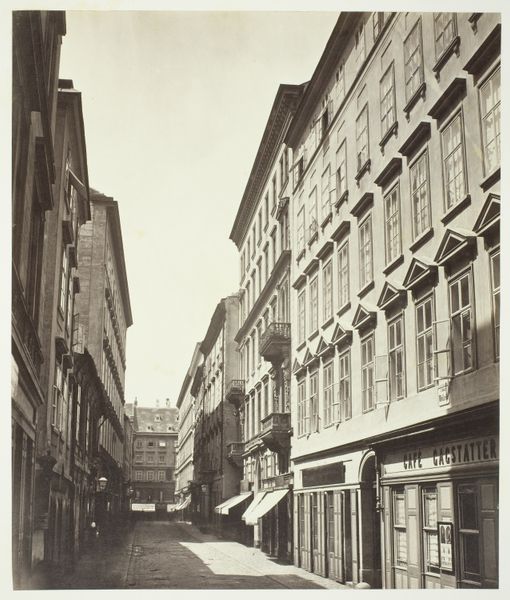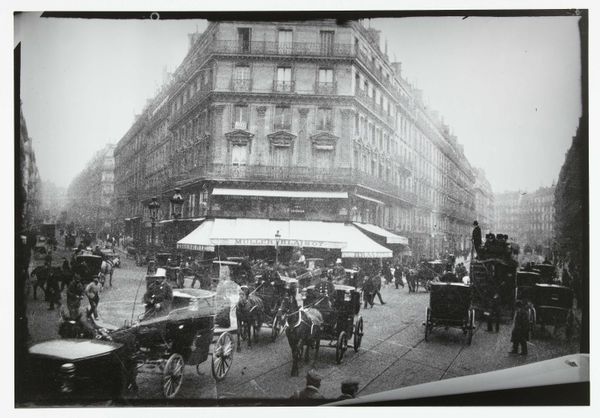
#
excavation photography
#
toned paper
#
film photography
#
ink painting
#
charcoal drawing
#
charcoal art
#
coffee painting
#
watercolour bleed
#
watercolour illustration
#
watercolor
Copyright: Public domain
Curator: This is Eugène Atget's photograph, titled "Rue Des Nonnains D'hyères." Editor: It feels haunted. These ghostly figures around the corner, and that dark shopfront. What exactly are we looking at, and what's the significance of these barely-there people? Curator: Atget was deeply invested in documenting the material fabric of old Paris, capturing scenes that were quickly disappearing due to modernization. His images weren't purely artistic; he sold them as reference material to artists, architects, and historians. The long exposure, a consequence of his equipment and the low light, created those blurred figures. They are simply evidence of life carrying on around the artist. Editor: So the process dictates the form. This isn't about capturing a precise moment, but revealing a material reality through light and time. What about the location? It looks like the street and building itself is a kind of character. Curator: The "Rue des Nonnains d'Hyères" tells its own story. Street photography allows for glimpses of socio-economic interactions in a particular place. Notice the carefully lettered shop signs offering "Vins a Emporter", the rates and what look like spirits and cognacs. Atget's focus on the physical environment, how commerce shaped urban experience is front and center, Editor: And there's a tension there, isn't there? Between the traditional modes of craftsmanship evidenced in the signs and architecture and the shifting currents of modern city life implied by the figures’ blurred transience. I find myself more aware of my own engagement as the viewer observing changes that already took place many years ago. It becomes layered with meanings concerning art consumption, cultural preservation and historical reflection. Curator: Precisely. It makes one ponder what we choose to memorialize and what gets erased in the relentless march of progress, making this photograph resonate long after the shutter closed. Editor: Absolutely, this work prompts us to rethink the roles and effects of art by providing a nuanced representation about changes within social and material conditions.
Comments
No comments
Be the first to comment and join the conversation on the ultimate creative platform.
